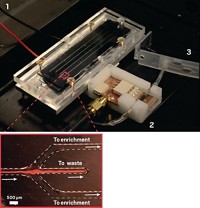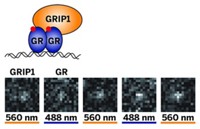Advertisement
Grab your lab coat. Let's get started
Welcome!
Welcome!
Create an account below to get 6 C&EN articles per month, receive newsletters and more - all free.
It seems this is your first time logging in online. Please enter the following information to continue.
As an ACS member you automatically get access to this site. All we need is few more details to create your reading experience.
Not you? Sign in with a different account.
Not you? Sign in with a different account.
ERROR 1
ERROR 1
ERROR 2
ERROR 2
ERROR 2
ERROR 2
ERROR 2
Password and Confirm password must match.
If you have an ACS member number, please enter it here so we can link this account to your membership. (optional)
ERROR 2
ACS values your privacy. By submitting your information, you are gaining access to C&EN and subscribing to our weekly newsletter. We use the information you provide to make your reading experience better, and we will never sell your data to third party members.
Analytical Chemistry
A Quicker Way To Sort Cells
Analytical Chemistry: Label-free method separates 10 billion bacterial cells within 30 minutes
by Laura Cassiday
September 5, 2014

A new technique quickly separates different species of bacteria from a mixture by simply adding them to a blend of water and ethanol (Anal. Chem. 2014, DOI: 10.1021/ac503100a). The high-throughput, label-free method may enable scientists to quickly isolate rare cells from clinical or environmental samples.
Flow cytometry has long been the workhorse for sorting different types of cells in a mixture. However, this technique usually requires researchers to label molecules on the cells with fluorescent dyes, which can be a costly and cumbersome process. Some microfluidic devices sort cells without the use of fluorescent dyes, but these devices are generally too slow to sort large numbers of cells, says Yi Y. Zuo, a mechanical engineer at the University of Hawaii, Manoa.
To develop a high-throughput, label-free cell sorting method, Zuo and colleagues exploited an intrinsic property of particles, including cells, called surface free energy. When the surface free energy of any particle in a liquid matches the surface tension of that liquid, the particles form a suspension. Particles with surface free energies that do not match the liquid’s surface tension clump together and settle to the bottom of the container. Zuo describes the phenomenon as being similar to the aphorism “like dissolves like.”
A cell’s surface free energy depends on the molecules on its surface. Each type of cell displays a unique set of molecules, so two types of cells should have different surface free energies.
Zuo and his colleagues thought that if they added a mixture of two bacterial species to a liquid with the right surface tension, one group of cells would sediment out while another would remain suspended. The researchers could then centrifuge the tubes and transfer the suspended cells to a new tube, effectively separating the two species.
To test the new method, Zuo and his coworkers made a series of liquids with different surface tensions by mixing ethanol and water at different ratios. They then added a mixture with equal numbers of Pseudomonas putida and Enterococcus faecalis to each liquid. The team measured the optical density of each solution with a spectrophotometer. When the surface free energy of the bacteria matched the surface tension of the liquid, the resulting cell suspension produced a peak in optical density. The optical density of P. putida peaked in a 30% ethanol solution, while the peak for E. faecalis was in a 2% ethanol solution.
The team found that they could separate 10 billion bacterial cells within 30 minutes. They could sort individual bacterial species so that the cell suspensions were 96% pure. The method also was gentle to the cells: Up to 99% of the cells remained viable after separation. However, the method could not sort two species of bacteria, Escherichia coli and E. faecalis, with similar surface free energies.
The technique also separated rare cells from a mixture that contained 1% E. faecalis and 99% P. putida. When the researchers added the cells to a liquid with a surface tension equal to the surface free energy of E. faecalis, the abundant P. putida settled to the bottom of the tube, leaving the rare E. faecalis in the supernatant with a purity of 99%.
The method’s major advantage is its high-throughput capabilities, says David A. Weitz, a physicist at Harvard University. The method is not limited by flow rate “because it does not rely on running cells in a serial fashion by a detector,” he says. “As such, very large volumes of cells can be sorted just as easily as smaller volumes.” However, Weitz notes that the method is limited to separating populations of cells with substantial differences in surface free energies.




Join the conversation
Contact the reporter
Submit a Letter to the Editor for publication
Engage with us on Twitter